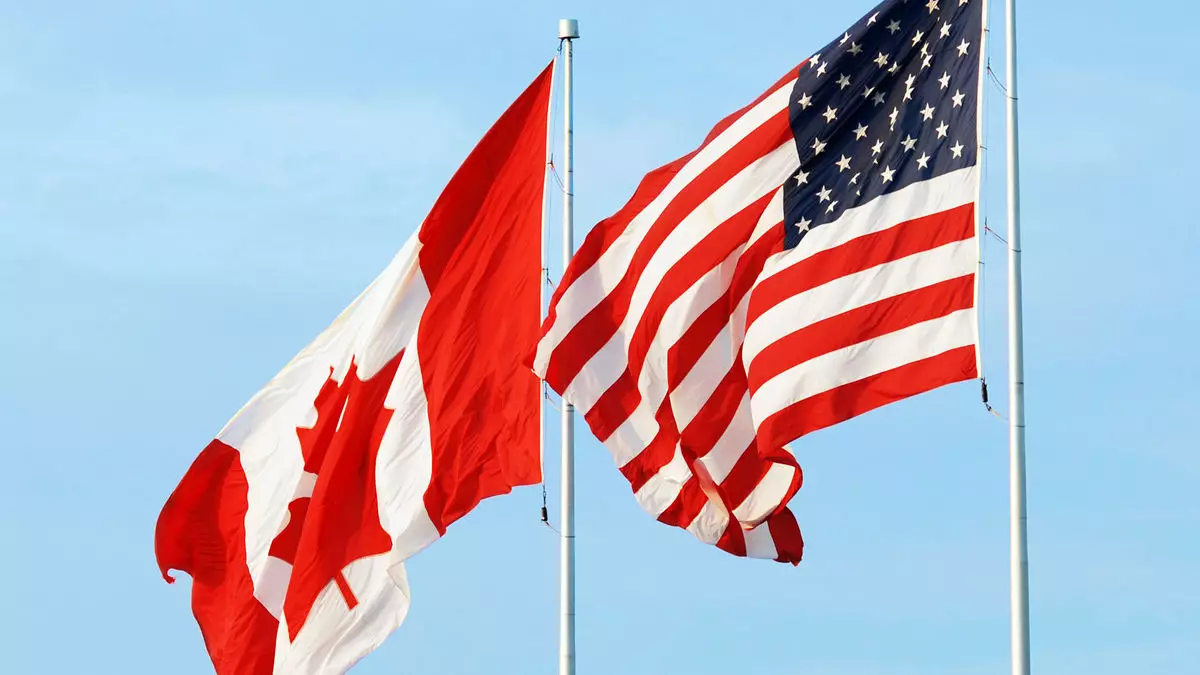A recent analysis by OAG, a leading aviation data company, has revealed a staggering 70% drop in advanced bookings for summer travel between Canada and the United States. This data reflects a significant downturn in the aviation market, an indicator that extends beyond mere numbers—showing a deepening rift in cross-border travel enthusiasm. OAG senior analyst John Grant pointedly emphasized the urgency of the situation in a blog post, stating, “Future flight bookings between Canada and the U.S. have collapsed.” The implications of this staggering figure cast a long shadow over the aviation industry, travel agencies, and the broader economic relationship between the two nations.
The Role of Political Climate
The current political landscape has undeniably influenced this decline in travel confidence. The U.S.-Canada aviation market has been beleaguered by a trade war instigated by former President Trump, along with his controversial comments regarding the prospect of Canada becoming the 51st state. These remarks have understandably sparked outrage among many Canadians, sparking a rise in national sensitivity towards policies emanating from south of the border. The fallout of such political rhetoric is visible not just in travel statistics, but also in public sentiment, suggesting that emotions and politics intertwine deeply in the context of international travel.
Currency Woes and Their Impact
Adding to the struggles faced by travelers is the depreciating value of the Canadian dollar against the U.S. dollar. As of March 26, 2023, the exchange rate stood alarmingly at 100 Canadian dollars being equivalent to merely 70 U.S. dollars. This dramatic shift has led to consumer hesitance, making U.S. destinations less attractive for Canadian travelers. In response to this economic reality, companies like Oceania Cruises have introduced unique promotions aimed at mitigating these adverse effects. By allowing Canadians to book cruises priced in their home currency at par value, they are attempting to create an attractive proposition that offsets the unfavorable exchange rate.
Airlines’ Response: A Mixed Bag
Despite the drastic drop in demand, airlines have adopted a surprisingly restrained approach in adjusting their flight schedules. Over the period from March 3 to March 24, carriers removed a mere 320,000 one-way seats from the U.S.-Canada route for the April to October timeframe, which results in only a 2.6% decline. While this figure may appear small, it indicates a reluctance to alter operational plans drastically. The most significant cuts occurred during the peak months of July and August, reflecting the airlines’ sensitivity to maintaining some semblance of baseline operations amid increasing uncertainty.
Moreover, airlines like WestJet have begun to reroute their canceled U.S. flights towards Europe, thus showcasing an adaptability to shifting market demands. Grant remarked on the challenges airlines face as summer approaches, highlighting the dilemma of adjusting pre-sold routes; a testament to the complex web of scheduling intricacies airlines must navigate quickly.
Future Considerations and Market Adjustments
As advanced bookings plummet, travelers and airlines alike must adapt. The shift in focus towards leisure travel, particularly cruise vacations, serves as a beacon for an industry scrambling to find stability amidst turbulence. For those aviation professionals tasked with strategizing in this climate, the need for innovative solutions is paramount. With WestJet expanding its European offerings in light of the U.S. market’s instability, it raises the question: Is it time for a broader re-evaluation of travel priorities?
This moment in the aviation industry serves as a stark reminder of how interconnected global travel is to political, economic, and societal factors. As airlines assess the current landscape, they must remain agile, ready to pivot not just in operational plans but also in how they cater to a changing demographic and consumer sentiment. The future of transcontinental travel between Canada and the U.S. may be uncertain, but it is clear that adaptability will be the key to navigating this tumultuous period.


Leave a Reply